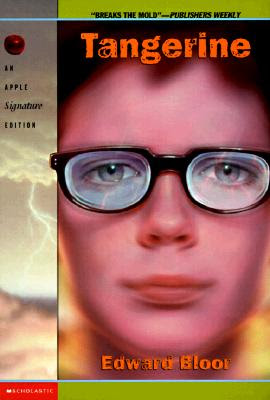By Edward Bloor
I picked this book because I remember it as being one of my favorites as an older child. Back then I just thought it was a fun story, but now I see it as something more. Bloor writes wonderfully, and the novel is full of realistic characters - both friendly and not. Paul Fisher, the story's protagonist, is legally blind. He must wear thick, nerdy, alien-like glasses, and has almost no peripheral vision. His poor eyesight is due to a mysterious accident that happened in his childhood, though he cannot remember the exact details. His older brother, Erik, likes to tease and tell people it's because he stared at the sun for too long, thus gracing Paul with the nickname "Eclipse Boy."
But despite Paul's literal blindness, Paul has the vision to see people in a way that most people can't. Erik is the star of the football team, and always seems to be the center of attention. Paul plays goalie on the school soccer team, and does a good job to boot - but nobody seems to notice. Similarly, nobody notices that Erik is actually a pretty disturbed person, and also a jerk. But throughout the novel Paul's memory of his mysterious accident becomes clear - and we learn the secret that Erik is actually quite threatening and dangerous. The only one who can uncover the truth is Paul. You'll have to read the book to find out what happens next.
This is just a summary in its barest forms. Along his journey toward truth Erik must face sinkholes, classism, lightning storms, angry neighborhood associations, flash frosts, underground fires, and a slew of other unsuspected things. Bloor's novel is surprisingly thoughtful and offers multiple meanings for almost everything that happens in the plot. If you're looking for a children's book that is equally thrilling, mysterious, and thought-provoking, then this is the book for you.






